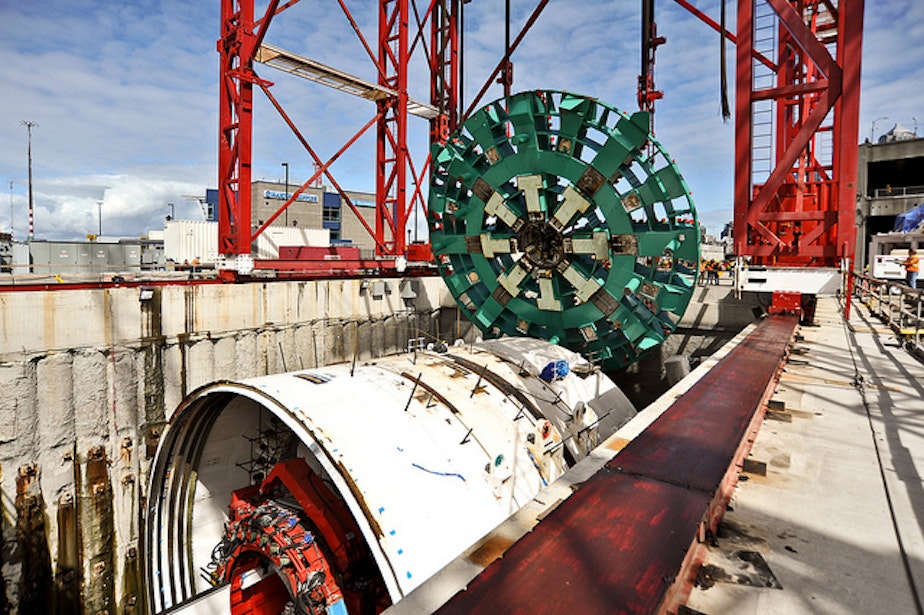Archaeological Digging Starts On Seattle's Stalled Tunnel Project

The past could present yet another obstacle to the future of the state Route 99 megaproject on the Seattle waterfront.
Archaeologists with the tunnel project started digging a series of 60 small holes Thursday to see if any signs of historic or prehistoric human activity are in the area.
Washington State Department of Transportation officials expect digging the array of 4-inch holes to take a week.
They said the work will not slow down the 110-by-150-foot pit that contractor Seattle Tunnel Partners wants to dig to repair the tunnel machine known as Bertha. The huge, round pit would allow the contractor to remove the cutter head at the front of Bertha, the world's largest tunneling machine.
Bertha has been sitting largely motionless for three months after digging just 1,000 feet of the planned 9,300-foot tunnel.
Seattle Tunnel Partners said late last month it will be at least six more months before Bertha can resume tunneling.
Bertha sits more than 60 feet deep, well below the depths where any artifacts might be found. But digging a shaft to remove Bertha's cutter head would disturb the soil layer 20 to 40 feet deep, where signs of past human activity might remain.
WSDOT archaeologist Steve Archer said on Thursday the state has been consulting with the Muckleshoot, Snoqualmie, Suquamish and Tulalip tribes in recent weeks on how to do any necessary archaeological work.
"The tribal governments have been incredibly supportive," he said.
Archer said the state has also sent a letter to the Duwamish tribe — though it is not a federally recognized tribe — but had not heard back.
"Nobody's talked to our tribe," said Duwamish tribal chair Cecile Hansen. "Absolutely not."
"Our people lived along the waters, down along the waterfront there," she said.
When asked in a news conference if a significant archaeological find could stop the tunnel, Archer said, "There's not anything in the law that says if you find something historic, the project stops."
He said in such a case, the tunnel project would consult with affected tribes and could pursue various strategies to avoid, minimize or make up for disturbing cultural resources.
"I truly believe they don't care," said Hansen, the great-great-grandniece of Chief Seattle, according to the Duwamish tribe's website. "If you find some kind of artifact and it's somewhere in a project, it stops everything because they have to evaluate it."
That area of the Seattle waterfront was originally tide flats, then it was filled in as the city named for a Duwamish chief developed. In the late 19th century, some Duwamish lived in the vicinity on an area of fill known as Ballast Island.
Hansen said she's never been a supporter of replacing the Alaskan Way Viaduct with a tunnel. She said she was not surprised the underground construction has had difficulties.
"I think it's the spirit of our chief putting his foot down and saying, 'enough,'" she said.
In 2004, WSDOT's repairs of the Hood Canal Bridge suffered a costly setback after discovery of hundreds of human remains forced the agency to abandon construction of a dry dock for bridge pontoons in Port Angeles, Wash.

